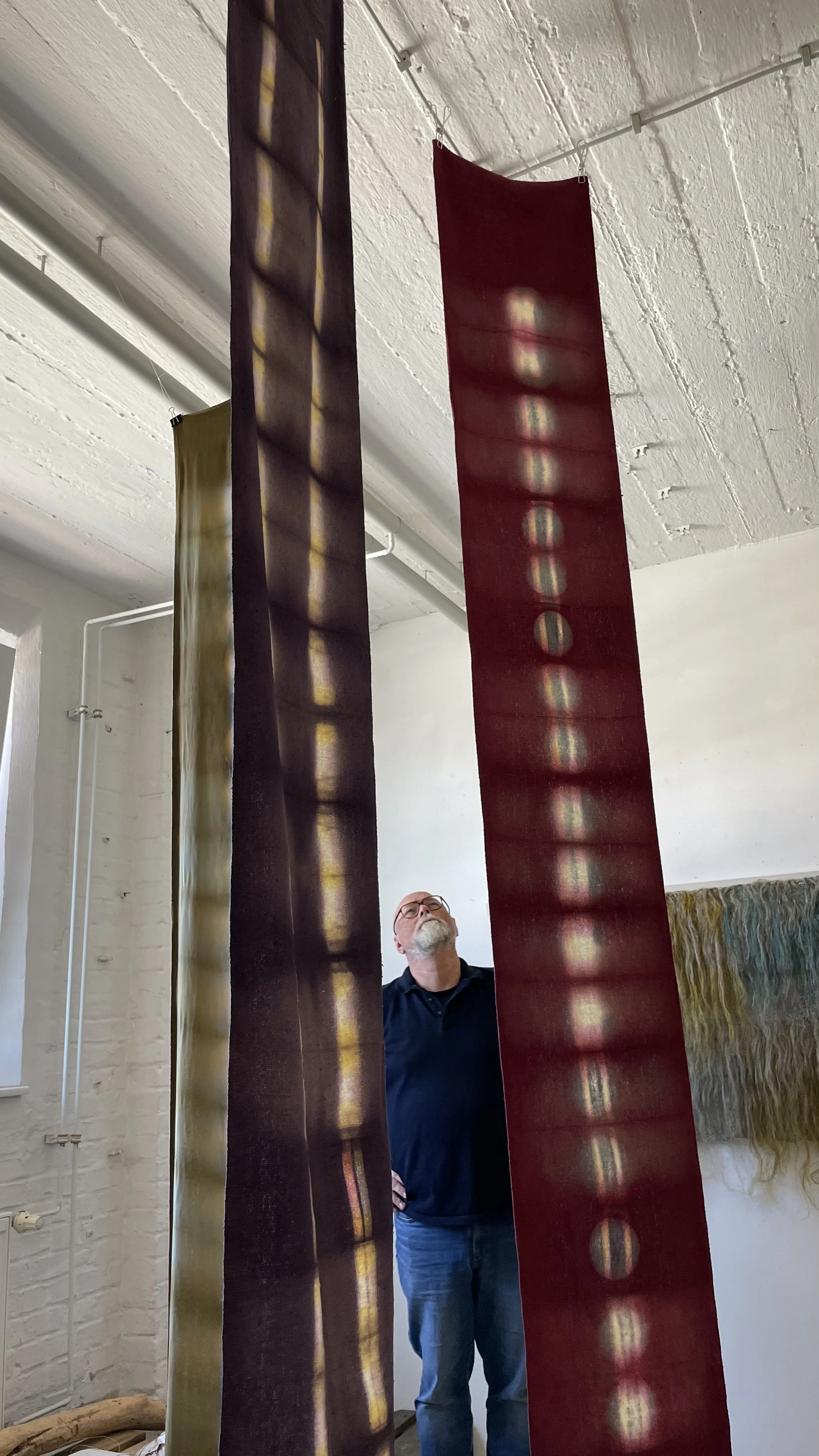Studio Visit with Veronika Moos – Textile Meets Transformation
To kick off the IP25 year, we visited the studio of artist Veronika Moos – a space where textile art, dyeing techniques, and conceptual thinking come together. In conversation with the artist, we were introduced to three of her current works.
We were particularly struck by “Rainbow”: dyed textiles created using the traditional Japanese Shibori technique. The depth of color and the meditative quality of the folds truly resonated with us.
In the end, the decision was unanimous: “Rainbow” will be featured as an exhibit in the Open House Exhibition in Arnsberg. A strong start to an exciting year with IP25!
A Brief Recap on the Shibori Technique
Shibori is a traditional Japanese dyeing method that involves folding, twisting, binding, or compressing fabric before dyeing it—creating organic, often unexpected patterns. Unlike uniform prints, Shibori embraces imperfection and variation, making each piece truly one of a kind. The resulting patterns are shaped by how the fabric resists the dye: tighter folds or binds result in lighter areas, while exposed surfaces absorb more color. It's a slow, manual process that brings a tactile quality and visual depth to the surface.
“What drew him with irresistible power was a tall, light-blue flower, which […] touched him with its broad, shining leaves. All around it stood countless flowers of every color, and a delightful fragrance filled the air. He saw nothing but the blue flower, gazing at it for a long time with inexpressible tenderness. At last, he wanted to approach it, when it suddenly began to move and transform; the leaves became more lustrous and clung to the growing stem, the flower bent toward him, and the petals revealed a blue, open collar in which a delicate face hovered. His sweet wonder grew with the strange transformation — when suddenly the voice of his mother awakened him […]”
— Novalis, Heinrich von Ofterdingen, 1800
But Veronika Moos doesn't work with Shibori alone
— her curiosity extends to other materials as well, like flax. Natural, tactile, and rich in history, flax offers its own unique narrative. A material that speaks softly, yet carries strength.
The poem “Novalis” by Heinrich von Ofterdingen serves as a gentle guide into this world — inviting us to follow the threads, both literal and poetic, that connect touch, memory, and material.





